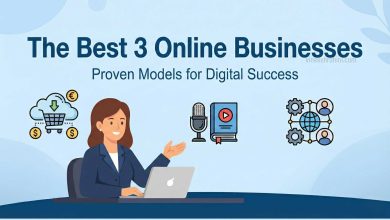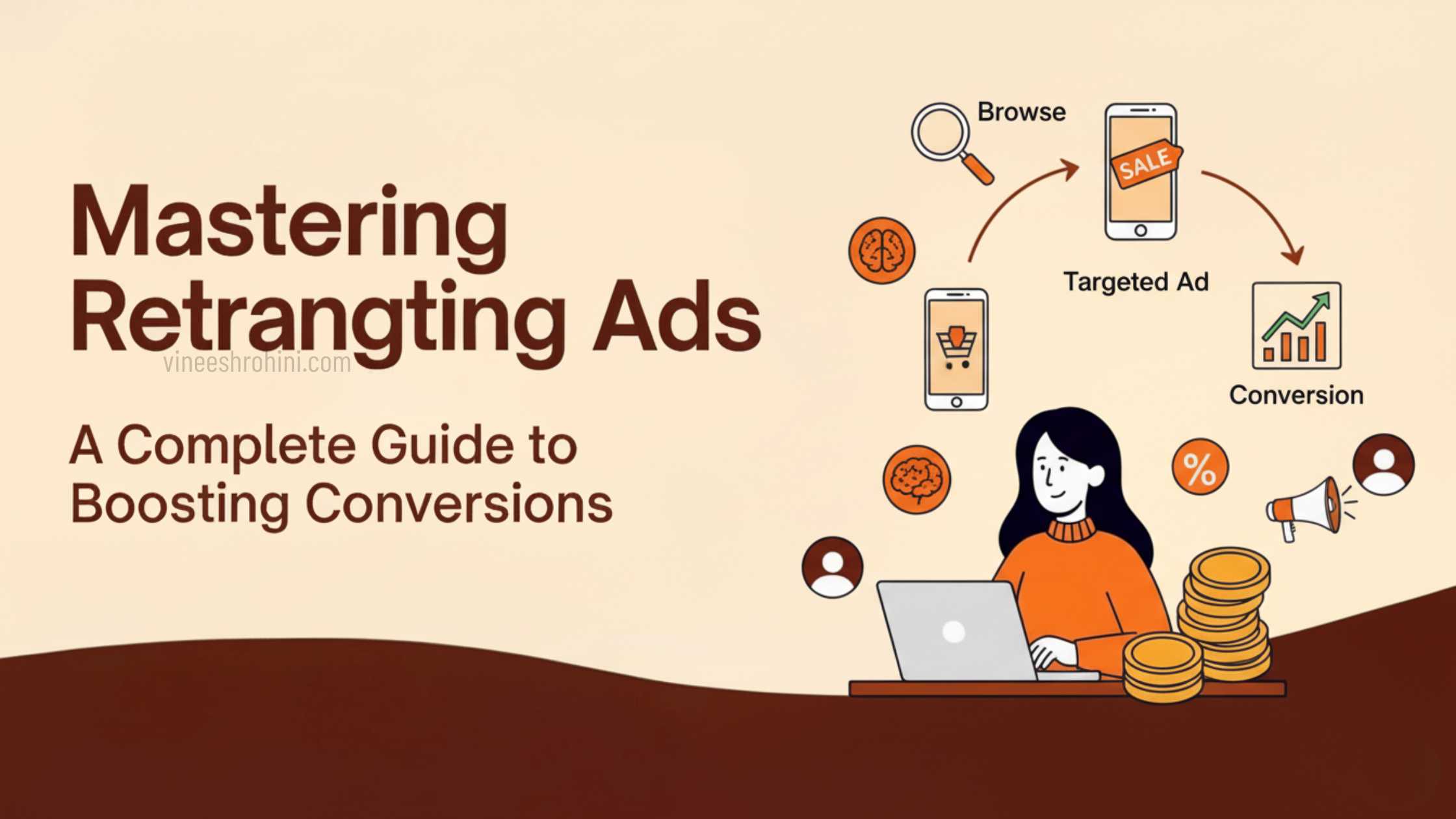How To Start A Blog And Make Money In 2024 : Comprehensive Guide
How To Start A Blog And Make Money : Blogging has evolved significantly over the years, yet it remains one of the most popular forms of content creation. Today’s successful bloggers don’t just write; they build communities, connect on multiple platforms, and provide valuable, well-researched content. Blogging can lead to income in various ways, such as affiliate marketing, sponsored posts, ad revenue, and selling products or services.
Table of Contents
In 2024, making money through blogging is still achievable, but it requires a clear strategy, a good understanding of your audience, and the use of modern tools to stay competitive. Let’s explore the steps to starting a blog and turning it into a profitable venture.
1. Choosing Your Niche: The Foundation of a Successful Blog

The first step in starting a blog is to choose a niche—a specific area of interest you’re passionate about and can consistently create content around. Here are some key considerations:
- Identify Your Interests: Write about something you enjoy; otherwise, maintaining the blog will be challenging.
- Market Demand: Research if there’s demand for your niche. Use tools like G Trends, AnswerThePublic, and Ahrefs to explore popular topics and common questions in your chosen niche.
- Profitability: Consider niches that have high potential for monetization, like personal finance, health, travel, food, and technology.
Remember, in 2024, niche selection is crucial because saturated markets make it harder to stand out. A well-defined niche with a unique twist is more likely to attract a dedicated audience.
2. Setting Up Your Blog: The Technical Side
Setting up a blog today is easier than ever, thanks to platforms that simplify the process.
Choosing a Blogging Platform
For most bloggers, WordPress.org is the ideal platform. It’s highly customizable, SEO-friendly, and supported by a large community. Alternatives like Wix, Squarespace, and Ghost are also available, but WordPress remains popular due to its flexibility and extensive plugin ecosystem.
Domain and Hosting
Your domain name should reflect your niche and be easy to remember. Choose a domain provider, such as Namecheap or GoDaddy, to buy your domain.
Also Read : Reselling or Affiliate Marketing: What’s The Difference?
For hosting, consider options like Bluehost, SiteGround, or HostGator. These providers offer reliable uptime and excellent support. As your traffic grows, you may want to upgrade to a managed WordPress host like WP Engine or Kinsta.
Setting Up WordPress
Once your domain and hosting are ready:
- Install WordPress from your hosting control panel.
- Choose a lightweight, responsive theme. In 2024, minimalistic designs perform well, especially on mobile.
- Customize your theme, set up essential plugins, and create core pages like About, Contact, Privacy Policy, and Terms of Service.
3. Content Strategy: What to Write and How to Stand Out
Your blog’s success depends heavily on the quality of your content and your ability to stand out. Here are strategies to craft engaging content:
Content Types
Mix up your content with different types, such as:
- How-to Guides and Tutorials: Comprehensive guides that solve specific problems in your niche.
- Lists and Round-ups: These posts attract readers with a specific, digestible format, e.g., “Top 10 Travel Destinations in Asia.”
- Product Reviews and Comparisons: Great for affiliate marketing, these posts offer detailed insights on products or services.
- Personal Stories: Readers appreciate authenticity; personal stories can make your blog feel more relatable and unique.
Keyword Research
Keyword research helps you understand what your audience is searching for. Use tools like Ahrefs, SEMrush, or Ubersuggest to identify relevant keywords with reasonable search volumes and competition levels.
Content Optimization
Content optimization is key for SEO. Focus on:
- On-page SEO: Use your keywords naturally in titles, headers, and meta descriptions.
- Internal linking: Link to other relevant posts within your blog to improve user experience and SEO.
- Engaging visuals: Visual content like infographics and images increase reader engagement and retention.
4. Building an Audience: Promotion and Community Engagement

Creating content is only part of the journey. Promoting your blog and engaging with your audience will help drive traffic and build a loyal readership.
Social Media
Choose platforms where your target audience hangs out. In 2024, TikTok, Instagram, Pinterest, and LinkedIn are essential for bloggers in many niches. Share blog posts, engage with followers, and be consistent with your posting.
Email Marketing
Building an email list is one of the most effective ways to retain readers. Use platforms like Mailchimp, ConvertKit, or Substack to collect emails and send newsletters. Offer something valuable in return, like an eBook, checklist, or exclusive content.
SEO
Organic traffic from search engines is one of the best sources of traffic. In addition to keyword research, focus on technical SEO by:
- Improving page load speed
- Optimizing images for faster load times
- Making sure your site is mobile-friendly
Collaborations and Guest Posting
Collaborate with other bloggers, join niche-specific forums, and participate in guest posting opportunities to increase your blog’s visibility.
5. Monetizing Your Blog: Turning Traffic into Income
With a steady flow of traffic, it’s time to monetize. Here are some of the most effective ways to make money from blogging in 2024:
1. Affiliate Marketing
Affiliate marketing is a powerful way to make money by promoting other companies’ products or services and earning a commission on each sale. Choose affiliate programs related to your niche; for example, Amazon Associates, CJ Affiliate, and ShareASale are popular for a variety of niches.
2. Sponsored Content and Brand Partnerships
Once your blog gains a significant following, brands may approach you for sponsored posts. Sponsored content can be lucrative, especially if you align with companies relevant to your audience.
3. Ad Revenue
Platforms like G AdSense and Mediavine allow bloggers to display ads and earn revenue based on impressions or clicks. Mediavine, in particular, requires a minimum number of monthly sessions but offers higher payouts than AdSense.
4. Digital Products
Selling digital products, like eBooks, printables, courses, or templates, allows you to leverage your expertise while generating passive income. For example, a travel blogger could sell travel guides, while a personal finance blogger could offer budgeting spreadsheets.
5. Online Courses or Webinars
Many bloggers turn their expertise into online courses. Platforms like Teachable and Thinkific are great for creating and selling courses. Webinars can also help establish you as an authority in your field, offering value to your audience while driving sales.
6. Membership and Subscription Models
Building a paid membership area or subscription model is a great way to generate recurring income. With platforms like Patreon or Buy Me a Coffee, you can offer exclusive content, private forums, or live Q&As to your subscribers.
7. Freelancing and Consulting Services
If you’ve built authority in your niche, consider offering services like consulting, coaching, or freelancing. Your blog becomes a portfolio, showcasing your knowledge and helping you attract clients.
6. Tracking Success: Analytics and Performance Optimization
Once your blog is up and running, tracking its performance is essential to understand what works and what doesn’t.
Setting Up G Analytics
G Analytics gives you insights into user behavior, traffic sources, and engagement levels. Monitor your bounce rate, average session duration, and pages per session to understand how readers interact with your content.
Key Performance Indicators (KPIs)
Your KPIs may vary based on your blog’s goals, but common ones include:
- Traffic: Total visits, unique visitors, and referral sources.
- Email Subscribers: Growth rate and open/click-through rates.
- Conversion Rate: The percentage of readers who take desired actions, like clicking on affiliate links or buying a product.
- Income: Tracking revenue from different monetization streams.
A/B Testing and Optimization
Experiment with different strategies for headlines, CTA buttons, layouts, and ad placements. Regular A/B testing helps identify what drives engagement and income, allowing you to optimize your content.
7. Overcoming Challenges and Staying Consistent
The journey to building a profitable blog isn’t always easy. Here’s how to overcome common challenges:
- Writer’s Block: Have a content calendar with topic ideas ready for when creativity runs dry.
- Time Management: Blogging can be time-consuming. Use productivity tools like Trello, Asana, or Notion to keep track of tasks.
- Staying Motivated: Blogging takes time to yield results. Setting small milestones and celebrating wins can keep you motivated.
How To Start A Blog And Make Money – Conclusion:

Blogging in 2024 is a rewarding way to share your voice, build a community, and make money. By choosing a niche, setting up a professional blog, creating quality content, promoting it effectively, and diversifying your income streams, you can turn your blog into a profitable business.
Buy Now : News & Magazine Website AI Automated
The key to success is consistency, authenticity, and staying updated with the latest blogging trends and tools. If you’re ready to put in the work, start your blog today—2024 could be your year to make an impact in the blogging world!
Keywords : How To Start A Blog And Make Money – How To Start A Blog And Make Money 2024 – How To Start A Blog And Make Money 2025 , How To Start A Blog And Make Money steps , How To Start A Blog And Make Money in india



